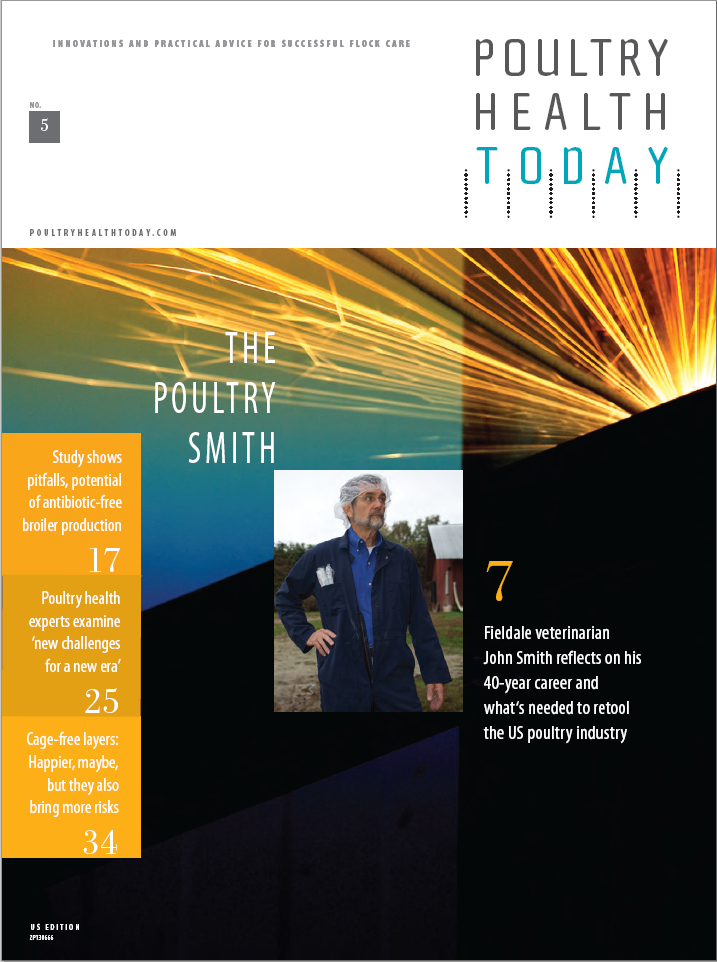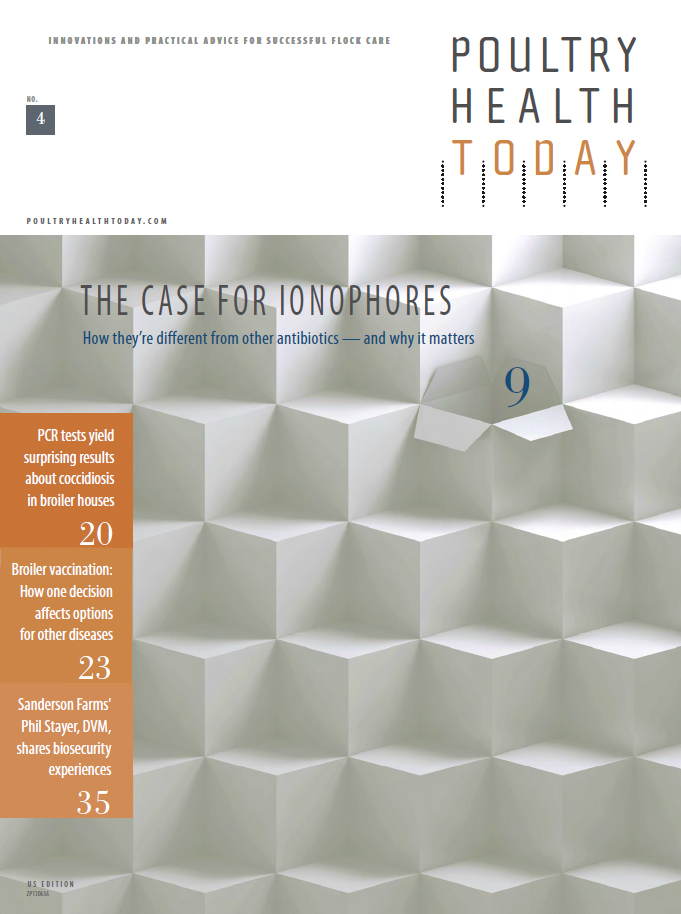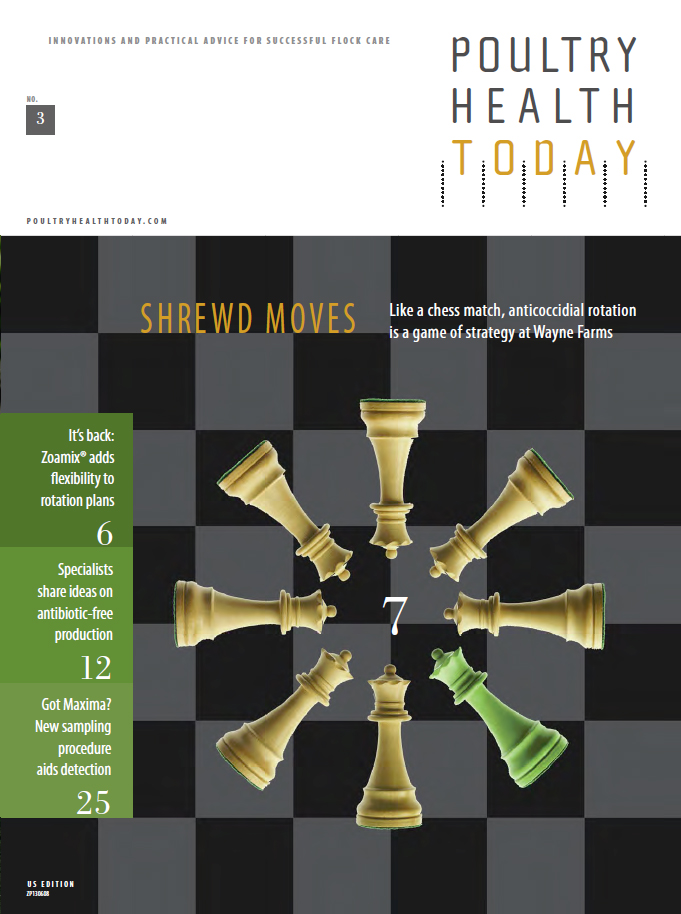

In ovo Marek’s vaccine yields benefits for breeders, layers

In ovo vaccination for Marek’s disease bene?ts protection and performance in breeders and layers, according to study results presented at the 2015 International Poultry Scienti?c Forum.1
In broilers, in ovo vaccination has become commonplace in many countries, but its value in breeders and layers, where only females are used, has been questioned. Consequently, a study was designed to compare in ovo with conventional subcutaneous vaccination protocols for Marek’s disease virus (MDV) in female chickens.
With the support of Zoetis Inc., researchers from North Carolina State University divided 1,100 embryos from a single flock into six treatment groups (Table 1).
Dual-needle system
The vaccines used in the study were rHVT-IBD, a recombinant herpesvirus of turkey (HVT) vaccine for Marek’s and infectious bursal disease, an SB-1 strain vaccine and CVI-988, a Rispens-strain Marek’s vaccine. In ovo vaccination was accomplished with the Embrex® Inovoject® dual-needle system, said Taylor Barbosa, DVM, MS, PhD, ACPV, director of outcomes research for Zoetis.
Researchers placed females in isolator rooms with 2-week-old specificpathogen- free shedder birds that had been previously challenged with the very virulent MDV 648A strain. This method replicates the natural infection route seen in the field, where the virus is shed into the environment by infected birds and is then inhaled by other uninfected birds.
CVI-988 birds gain more
Groups 1, 2 and 6 were commingled into two rooms and kept apart from the other groups. Groups 3, 4, 5 and 6 were commingled in separate rooms. The unchallenged control birds were kept in yet another room with no infected birds.
The researchers obtained feather-pulp samples at 7 and 21 days of age and then weighed all birds at 7, 21 and 49 days of age. They also scored birds at 49 days of age for MDV lesions and protection (Table 1).
They found bodyweight gain on day 21 of age was significantly higher for birds that received CVI-988 compared to both the recombinant vaccine and unvaccinated groups (p > 0.05). On the other hand, there were no differences in bodyweight gain between the unvaccinated birds and the two groups that received only the recombinant vaccine, Barbosa said.
At 49 days of age, Group 3 — which received both vaccines in ovo — had the highest bodyweight. Unvaccinated controls had the lowest bodyweight, which was no different from the group that received only the recombinant vaccine at hatch. Bodyweight in the remaining Groups 1, 4 and 5 was in the intermediate range.
| Table 1. Vaccine protocols in the study | |||
| Vaccine groups | In ovo to 18-day embryos |
Subcutaneous injection at hatch |
Protection index at day 49 of age* |
| 1: rHVt-iBD+SB1 |  |
78% | |
| 2: rHVt-iBD+SB1 |  |
34% | |
| 3: CVi-988 + rHVtiBD+ SB1 |
 |
92% | |
| 4: CVi-988 + rHVtiBD+ SB1 |
 |
89% | |
| 5: rHVt-iBD+SB1 CVi-988 |
 |
 |
82% |
| 6: Unvaccinated controls |
NA | ||
| * Protection index = % Marek’s disease (MD) in unvaccinated - % MD in vaccinated/% MD vaccinated x 100 | |||
Vaccine benefits
All unvaccinated, challenged birds developed MDV lesions, demonstrating that the challenge from shedder birds was successful. The protection index was highest (92%) for Group 3 — the birds that received both vaccines in ovo — followed by Group 4 (89%), then Group 5 (82%) and Group 1 (78%). The protection index in Group 2 that received only the recombinant vaccine at hatch was 34%.
The results with bodyweight gain and protection demonstrate the bene?ts of using an e?cacious, low-passage CVI-988 vaccine, Barbosa said.
“The time between vaccination and MDV exposure has been described as important for protection. Our ?ndings con?rm that in ovo vaccination of female breeders improves the protection given by all vaccines tested and demonstrates the bene?ts of in ovo vaccination for all birds susceptible to early exposure with ?eld MDV strains,” he said.
1 Barbosa T, et al. Optimizing Marek’s diseases vaccination protocols with in ovo vaccination. 2015 International Poultry Scienti?c Forum Abstracts.
More Issues












